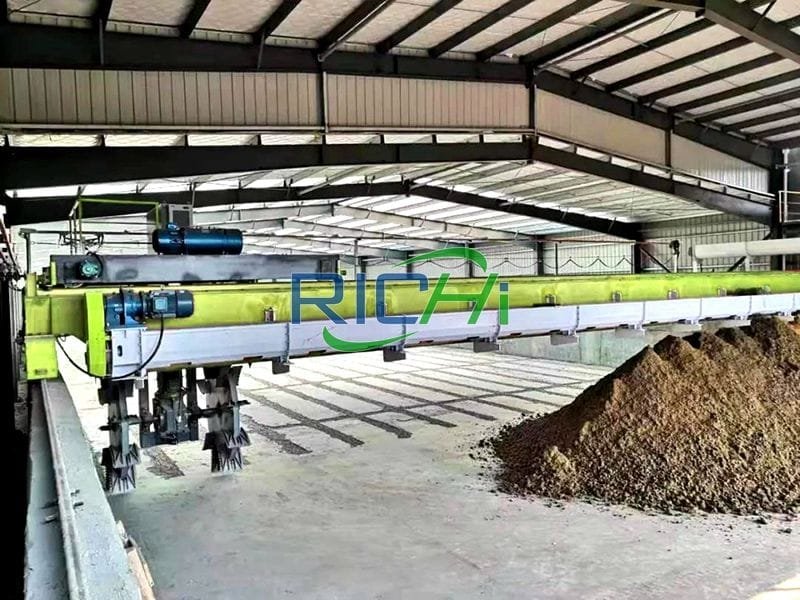While biomass materials are typically associated with organic fertilizer production, some can be used in the manufacturing of chemical fertilizer pellets as well. This article explores the various biomass materials that can be incorporated into chemical fertilizer pellet production, their benefits, and considerations for use.
- Agricultural Residues
Agricultural residues are among the most abundant biomass materials available for fertilizer production:
- Crop Stalks: Corn stalks, wheat straw, and rice straw can be processed and used as fillers or carriers for chemical nutrients.
- Husks and Shells: Rice husks and peanut shells, rich in silica, can improve the physical properties of fertilizer pellets.
- Sugarcane Bagasse: The fibrous residue from sugarcane processing can be used as a binding agent in fertilizer pellets.
These materials can enhance the organic content of chemical fertilizers, improving soil structure when applied. (Related post: organic fertilizer production line)
- Wood-Based Biomass
Wood industry by-products offer excellent potential for use in chemical fertilizer pellets:
- Sawdust: Fine wood particles can serve as an absorbent carrier for liquid chemical nutrients.
- Wood Chips: When ground finely, wood chips can be incorporated into fertilizer blends.
- Bark: Tree bark, rich in lignin, can act as a natural binder in pellet formation.
Wood-based materials can improve the slow-release properties of chemical fertilizers, extending their effectiveness in the soil.
- Industrial By-Products
Certain industrial by-products can be repurposed for fertilizer production:
- Paper Mill Sludge: Rich in cellulose fibers, it can improve pellet structure and water retention.
- Biochar: Produced from various biomass sources, biochar can enhance nutrient retention in fertilizer pellets.
- Fly Ash: While not strictly biomass, fly ash from biomass power plants can be used as a filler and source of micronutrients.
These materials often bring additional benefits like improved soil water retention or micronutrient content.
- Aquatic Biomass
Aquatic plants and algae offer unique properties for fertilizer production:
- Seaweed: Rich in micronutrients, seaweed can enhance the nutritional profile of chemical fertilizers.
- Water Hyacinth: This invasive aquatic plant, when processed, can serve as a biodegradable carrier for nutrients.
- Algae Biomass: Certain algae species, rich in nutrients, can be incorporated into fertilizer blends.
Aquatic biomass often brings additional trace elements beneficial for plant growth.
- Animal-Derived Biomass
While more commonly used in organic fertilizers, some animal-derived biomass can be incorporated into chemical fertilizer production:
- Bone Meal: Rich in phosphorus and calcium, it can complement chemical nutrient formulations.
- Feather Meal: High in nitrogen, it can be used to boost the nitrogen content of fertilizer blends.
- Fish Waste: Processed fish waste can provide both macro and micronutrients to fertilizer formulations. (Related post:compost granulating machine )
These materials can enhance the organic nitrogen content of chemical fertilizers, potentially improving nutrient uptake efficiency.
Benefits of Incorporating Biomass in Chemical Fertilizer Pellets
- Improved Physical Properties: Biomass can enhance pellet durability and reduce dust formation during handling and application.
- Enhanced Soil Health: The organic matter in biomass contributes to improved soil structure and microbial activity.
- Slow-Release Effect: Certain biomass materials can slow down nutrient release, reducing leaching and improving fertilizer efficiency.
- Waste Utilization: Incorporating biomass helps in recycling agricultural and industrial waste products.
- Cost Reduction: Using locally available biomass can potentially reduce production costs.
Considerations for Using Biomass in Chemical Fertilizer Pellets
- Nutrient Consistency: Ensure that the addition of biomass does not significantly alter the guaranteed nutrient analysis of the fertilizer.
- Processing Requirements: Biomass materials often need pre-treatment (drying, grinding) before incorporation into fertilizer production.
- Regulatory Compliance: Check local regulations regarding the use of biomass materials in chemical fertilizers.
- Quality Control: Implement strict quality control measures to ensure consistent product quality.
- Equipment Compatibility: Ensure that existing fertilizer production equipment can handle biomass materials effectively.
Conclusion
While chemical fertilizers are primarily composed of synthetic nutrients, the incorporation of biomass materials can bring several benefits to the final product. From agricultural residues to industrial by-products, a wide range of biomass sources can be utilized in chemical fertilizer pellet production. These materials can improve the physical properties of fertilizer pellets, enhance soil health, and contribute to more sustainable fertilizer production practices.
As the fertilizer industry continues to evolve towards more sustainable and efficient products, the integration of biomass materials into chemical fertilizer production represents an innovative approach. By carefully selecting and processing appropriate biomass sources, manufacturers can create fertilizer pellets that combine the benefits of chemical nutrients with the soil-enhancing properties of organic matter.
However, it’s crucial to approach biomass incorporation with careful consideration of nutrient balance, regulatory compliance, and production process compatibility. With proper planning and implementation, the use of biomass in chemical fertilizer pellets can lead to products that are not only effective in delivering nutrients but also contribute to long-term soil health and sustainability.
For details please contact: pelleting machine
WhatsApp:86 138 3838 9622
Email:enquiry@richipelletmachine.com



